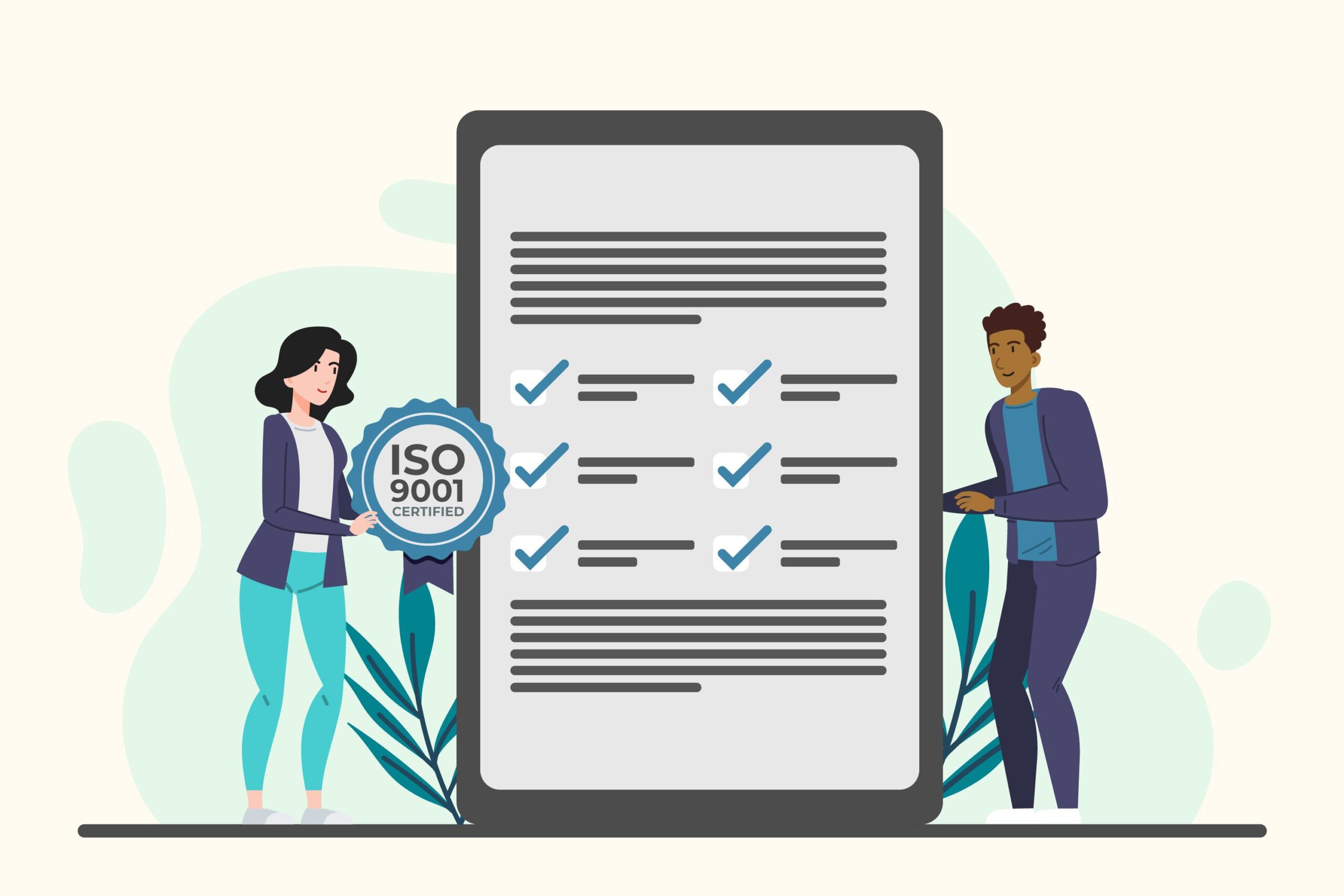
Optimize Your Practice with Revenue cycle KPIs in Healthcare

Key performance indicators in healthcare offer a powerful tool to gage success, drive improvement, and make informed decisions. These metrics provide valuable insights into various aspects of a practice, including financial health, operational efficiency, and patient satisfaction. By tracking and analyzing these indicators, healthcare providers can identify areas for enhancement and implement strategies to boost their overall performance.
This article explores the critical role of key performance indicators in healthcare practices. It delves into financial KPIs that help monitor revenue cycle management, reimbursements, and accounts receivable. The piece also examines operational metrics that streamline practice management and enhance productivity. Additionally, it discusses KPIs related to patient experience and technological innovation. By understanding and leveraging these indicators, healthcare providers can make data-driven decisions, improve their financial performance, and deliver better patient care.
Understanding the Value of KPIs in Healthcare Practices
Key Performance Indicators (KPIs) in healthcare are specific and measurable elements of practice that can be used to assess the quality and safety of care . These metrics play a crucial role in helping healthcare providers monitor, analyze, and optimize their processes to increase satisfaction for both patients and healthcare professionals alike .
Defining KPIs for Healthcare
KPIs differ from audits in that they serve as indicators of areas that require further follow-up and investigation, whereas audits assess performance against a set of standards or criteria in a health or social care service . The purpose of healthcare KPIs includes:
- Indicating what is happening in the organization
- Helping to keep an eye on core areas of the service and their performance
- Highlighting areas that need further examination
- Providing valuable insights for both senior management and department heads
When selecting healthcare KPIs, it’s important to consider several factors:
- The importance of the problem
- Service-user safety
- Potential for improvement
- Controllability by health or social care system/professionals
- Measures across multiple domains
Healthcare organizations should identify KPIs related to both direct care and non-direct care aspects, such as governance, supplies, fire safety, and staff training . It’s also crucial to consider areas core to the service being provided, high-risk areas, and recent concerns highlighted by complaints, audit findings, or incident reports .
Impact of KPIs on Practice Performance
Implementing well-defined KPIs can have a significant impact on healthcare practice performance. These metrics allow organizations to:
- Compare their performance to other care facilities and identify areas for improvement
- Increase operational efficiency, optimize costs, and enhance patient satisfaction
- Measure financial aspects, including costs associated with treatments, claims, and human capital
- Evaluate internal processes, which can be critical in life-or-death situations
- Assess public health and reduce strain on emergency response systems
- Analyze emergency department operations and patient survival rates
- Improve quality of care, leading to lower readmission rates and higher patient satisfaction
To maximize the impact of KPIs, healthcare organizations should ensure they are clearly defined and include all relevant parameters, such as:
- KPI title and description
- Rationale and target (if appropriate)
- Calculation method (numerator and denominator)
- Data source and collating frequency
- Responsibility for collecting data
- Reporting structure
It’s essential to display KPI data in graphical form to visualize trends over time, including the time period and numerical or percentage measures . Regular analysis and interrogation of the data by relevant individuals or groups are crucial. This process should involve allocating sufficient time to consider changes in the data, trends, and any unusual results .
Actions identified from the analysis should be managed through a Quality Improvement Plan (QIP) process, and audits may be conducted to determine the root cause of the results . By leveraging KPIs effectively, healthcare practices can make data-driven decisions, improve their financial performance, and deliver better patient care.
At this point, it’s worth mentioning that companies like Wenour, a medical billing service provider, can play a significant role in helping healthcare practices implement and track financial KPIs. By outsourcing billing processes to experts, practices can focus on patient care while ensuring accurate and timely revenue cycle management.
Critical Financial KPIs for Practice Success
Financial key performance indicators (KPIs) are essential tools for healthcare practices to monitor their financial health and make informed decisions. These metrics provide valuable insights into various aspects of a practice’s financial performance, allowing healthcare providers to identify areas for improvement and implement strategies to enhance their overall success.
Cash Flow Metrics
Cash flow analysis is crucial for assessing a practice’s financial health and making informed decisions. Several important cash flow metrics include:
Operating Cash Flow (OCF): This measures the cash generated or consumed by a practice’s core operations. A positive OCF indicates healthy operational performance, while a negative OCF may suggest potential liquidity issues .
Free Cash Flow (FCF): FCF represents the cash available to the practice after all operating and capital expenditures. It indicates the practice’s ability to generate excess cash for growth opportunities or other strategic initiatives .
Cash Conversion Cycle (CCC): This metric measures the time it takes for a practice to convert its investments in inventory and other resources into cash inflows from sales. A shorter CCC indicates efficient working capital management and faster cash generation .
Days Sales Outstanding (DSO): DSO measures the average number of days it takes for a practice to collect payments from patients after providing services. A lower DSO indicates efficient credit and collection policies, resulting in faster cash inflows .
To maintain a healthy cash flow, practices should aim to have at least three months of cash as a cushion to cover mandatory payments, regardless of income .
Profitability Indicators
Profitability indicators help practices assess their financial performance and identify areas for improvement. Key profitability metrics include:
Gross Profit/Net Income: This metric reflects the proceeds available for reinvestment in the practice or to share with stakeholders. It’s a clear indicator of a practice’s financial health .
Profit Margin: This percentage represents the revenue left over after paying for the costs of running the practice. It’s important to note that this number does not reflect the physician’s personal income .
Average Revenue Per Visit: This measures how much money, on average, each patient visit generates. It’s calculated by dividing the total revenue for a specific period by the number of visits during that time .
Cost Per Visit: This metric helps calculate the net revenue per visit by determining how overhead expenses average out across the number of patients. It provides insight into profits by adjusting for costs beyond just wages and supplies .
Revenue Cycle Efficiency
Efficient revenue cycle management is crucial for the financial health of healthcare providers. To improve revenue cycle efficiency, practices can implement several strategies:
Simplify the billing process: Use user-friendly interfaces and clear, transparent billing statements to contribute to patient satisfaction and on-time payments .
Offer multiple payment options: Implement an omnichannel approach to payment, including digital methods such as mobile apps, to make it easier for patients to make payments .
Integrate with EHR systems: Seamless integration within Electronic Health Record (EHR) systems enhances data accuracy and workflow efficiency .
Educate patients and staff: Inform both patients and staff about the intricacies of the revenue cycle and the changing legislative environment surrounding it .
Consider outsourcing: Outsourcing revenue cycle management to professionals can help streamline financial processes, reduce operational and labor costs, and enhance efficiency .
At this point, it’s worth mentioning that companies like Wenour, a medical billing service provider, can play a significant role in helping healthcare practices implement and track financial KPIs. By outsourcing billing processes to experts, practices can focus on patient care while ensuring accurate and timely revenue cycle management.
By monitoring these critical financial KPIs and implementing strategies to improve them, healthcare practices can optimize their financial performance, make data-driven decisions, and ultimately provide better patient care.
Operational KPIs for Streamlined Practice Management
Operational key performance indicators (KPIs) in healthcare focus on the performance of medical facilities. By improving these metrics, hospitals and clinics can increase operational efficiency, optimize costs, and enhance patient satisfaction . These KPIs provide valuable insights into various aspects of practice management, allowing healthcare providers to identify areas for improvement and implement strategies to enhance their overall success.
Appointment Management
One of the most critical operational KPIs is the average patient wait time. This metric tracks the average amount of time a patient must wait between checking in and seeing a provider . It’s an essential indicator for staffing, scheduling, and providing insight into patient satisfaction . By monitoring and optimizing this KPI, healthcare facilities can improve patient experience and reduce bottlenecks in their workflows.
Another important aspect of appointment management is the bed or room turnover rate. This KPI demonstrates how quickly patients are moving in and out of the facility, affecting its overall efficiency . It’s crucial to track this metric in conjunction with readmission rates to ensure patients are not being discharged prematurely, only to be readmitted again .
Resource Allocation
Effective resource allocation is vital for streamlined practice management. The staff-to-patient ratio is a key indicator that shows the use and capacity of staff resources, which can significantly affect the quality of patient care . By optimizing this ratio, healthcare facilities can ensure they have adequate staffing levels to meet patient needs without overstretching their resources.
Medical equipment utilization is another crucial KPI for resource allocation. This metric measures the utilization of advanced equipment at a facility, helping to control expenses associated with specialized equipment that often carries a heavy price tag . However, it’s essential to balance utilization to avoid over-use, which can lead to increased maintenance costs and unexpected downtime, potentially causing treatment delays .
The average number of patient rooms in use at one time is also a valuable KPI. This metric shows how well space is used to treat patients and helps determine if more or less space is needed in the facility . It can be thought of as an occupancy rate, similar to that of a hotel.
Workflow Efficiency
Improving workflow efficiency is crucial for streamlined practice management. One important KPI in this area is the average hospital stay. This metric tracks the average length of time patients stay in the hospital . To get a more detailed picture, patients should be grouped by their treatment type, as different procedures require varying lengths of stay .
Communication between primary care physicians, proceduralists, and patients is another vital KPI for workflow efficiency. This metric determines how frequently various parties are in communication with one another, which can increase the quality of care for the patient . It can be measured by satisfaction levels or by the number of documented communication activities.
Implementing a Clinical Communication and Collaboration (CC&C) solution can significantly improve workflow efficiency. Such platforms allow faster, more effective communication, enabling clinicians to treat more patients in less time . Hospitals that have implemented CC&C solutions have managed to reduce wait times, ease bottlenecks that hamper patient flow, reduce patient transfer times, accelerate admissions and discharges, make faster clinical decisions, improve patient safety, and achieve better patient outcomes with fewer readmissions .
By focusing on these operational KPIs and implementing strategies to improve them, healthcare practices can optimize their performance, make data-driven decisions, and ultimately provide better patient care. It’s worth noting that companies like Wenour, a medical billing service provider, can play a significant role in helping healthcare practices implement and track these KPIs, allowing practices to focus on patient care while ensuring efficient practice management.
Patient Experience KPIs
Patient Satisfaction Metrics
Patient satisfaction is a crucial aspect of healthcare quality assessment. It provides valuable insights into the overall hospital system and infrastructure, going beyond just the patient’s experience . To effectively measure patient satisfaction, healthcare providers can utilize several key performance indicators (KPIs):
Net Promoter Score (NPS): This metric offers an instant view of how well a healthcare provider is performing with its patients at any given time .
Customer Effort Score (CES): Considered a loyalty driver, CES can be measured with a single question. According to Gartner research, 96% of customers with a high-effort service interaction become more disloyal compared to just 9% who have a low-effort experience .
Customer Satisfaction (CSAT): This metric helps understand how patients perceive specific interactions at the hospital. However, it’s worth noting that patients often rate individual interactions higher than their overall organizational experience .
Patient Retention Rate: This backward-looking metric is crucial, as research from Bain reveals that acquiring a new patient requires 5 to 25 times more effort and cost than retaining an existing one .
Access to Care Indicators
Access to care is a critical component of patient experience. Several indicators can help measure this aspect:
Health Care Availability: This refers to the geographic proximity of providers and facilities to an individual. Limited availability of health care resources can reduce access to health services and increase the risk of poor health outcomes .
Primary Care Access: Nearly 84,000,000 people in the United States live in Primary Care Health Professional Shortage Areas . Primary care serves as the usual and ongoing source of care, associated with enhanced access to other health care services, better health outcomes, and a decrease in hospitalization and emergency department visits .
Safety Net Providers: These providers focus on caring for uninsured, poor, Medicaid, or other vulnerable patients. The availability of safety net providers is linked to improved access to care among uninsured persons .
Federally Qualified Health Centers (FQHCs): These are a critical component of the health care safety net. FQHC service availability is positively associated with access to care for the uninsured and having a usual source of care for those with Medicaid .
Communication Effectiveness
Effective communication between healthcare providers and patients is crucial for patient satisfaction and overall healthcare quality. Several metrics can help measure communication effectiveness:
Patient Feedback: Use employee survey features to track patient feedback. This helps keep a pulse on engagement and satisfaction levels .
Social Media Metrics: Utilize social media platforms to expand the range of patient feedback. Sentiment analysis can be used to examine positive and negative opinions and monitor emotions to improve hospital performance .
Number of Interactions: This operational KPI assists management in learning how many interactions were needed to resolve an encounter. Here, interaction refers to communication with patients over channels such as SMS, email, phone, etc. .
Quality Metrics: These are used to assess how closely the service given matched the patient’s genuine needs. They can be divided into general quality measures and quality metrics specific to services .
Communication with Healthcare Professionals: This factor seems to be crucial for patient satisfaction across all countries. In the U.K., for example, patients report the most positive experiences about their communication with healthcare professionals .
By leveraging these patient experience KPIs, healthcare providers can gain valuable insights into their performance and identify areas for improvement. It’s worth noting that companies like Wenour, a medical billing service provider, can play a significant role in helping healthcare practices implement and track these KPIs, allowing practices to focus on patient care while ensuring efficient practice management and improved patient experience.
Technology and Innovation KPIs
EHR Utilization
Electronic Health Record (EHR) systems have become integral to modern healthcare practices. EHR analysts play a crucial role in managing, enhancing, and optimizing these systems, working closely with IT teams, healthcare providers, and other stakeholders . To measure the effectiveness of EHR implementation, several key performance indicators (KPIs) are utilized.
System uptime is a critical KPI, calculating the proportion of time the EHR system is fully functional. Downtime can disrupt patient care, potentially leading to serious consequences. EHR analysts monitor uptime and work to improve it, ensuring constant access to patient information .
Response time is another vital KPI. Inefficient response times can frustrate healthcare professionals and reduce their productivity. EHR experts analyze response times and strive to enhance system performance for a smooth user experience .
User adoption rates are monitored to identify areas that may benefit from additional guidance or support, promoting greater acceptance and use of the EHR system . Data validation checks and regular audits are performed to ensure the accuracy and completeness of patient data, which is crucial for safe and effective patient care .
Telehealth Adoption
Telehealth utilization expanded rapidly during the COVID-19 pandemic and continues to provide critical access to healthcare services. A study found that telehealth use rates varied between 20.5% and 24.2%, with an average of 22.0% of adults reporting telehealth use in the last four weeks .
Interestingly, telehealth use rates were highest among those covered by Medicaid (28.3%) and Medicare (26.8%), individuals who are Black (26.1%), and those earning less than $25,000 (26.4%) . However, disparities in accessing video telehealth services persist, particularly among certain racial and ethnic groups .
To measure telehealth effectiveness, healthcare organizations can use KPIs such as patient outcomes, operational efficiency, technical reliability, and cost-effectiveness. These include measures like improvements in condition management, patient satisfaction, consultation numbers, waiting times, and cost savings .
Data Security Measures
Healthcare data security is crucial for protecting sensitive patient information from unauthorized access, use, or disclosure. Implementing effective cybersecurity measures ensures healthcare data confidentiality, integrity, and availability .
Several key strategies can be employed to enhance data security:
- Implement Role-Based Access Control (RBAC) to ensure access to sensitive data is based on the principle of least privilege .
- Monitor and audit access logs regularly to detect unusual or suspicious activities .
- Encrypt data both in transit and at rest using secure encryption algorithms .
- Enforce Multi-Factor Authentication (MFA) to add an extra layer of security .
- Regularly update and patch systems to protect against vulnerabilities .
- Educate and train staff on data security best practices to reduce the risk of accidental data exposure .
It’s worth noting that companies like Wenour, a medical billing service provider, can play a significant role in helping healthcare practices implement and track these technology and innovation KPIs. By outsourcing billing processes to experts, practices can focus on patient care while ensuring efficient practice management and improved data security.
Conclusion
Key Performance Indicators (KPIs) in healthcare have a significant influence on practice performance, offering valuable insights into financial health, operational efficiency, and patient satisfaction. By tracking and analyzing these metrics, healthcare providers can pinpoint areas to improve and put strategies in place to boost their overall performance. This data-driven approach allows practices to make informed decisions, enhance their financial standing, and deliver better patient care.
To wrap up, the implementation of well-defined KPIs across various aspects of healthcare practice management is crucial to thrive in today’s evolving healthcare landscape. From financial metrics to patient experience indicators, these KPIs provide a roadmap to optimize processes and drive success. It’s worth noting that companies like Wenour, a medical billing service provider, can play a key role in helping healthcare practices implement and track these KPIs, allowing practices to focus on patient care while ensuring efficient management and improved outcomes.
FAQs
What are some examples of key performance indicators in healthcare?
Key performance indicators (KPIs) in healthcare include metrics such as the patient satisfaction score. This particular KPI evaluates the level of satisfaction patients feel regarding their healthcare experience, which encompasses interactions with staff, the quality of care received, facility standards, and the overall patient experience. It plays a crucial role in enhancing care quality and promoting patient-centered services.
How do you develop key performance indicators in healthcare?
Developing key performance indicators (KPIs) in healthcare involves several steps:
- Identify the audience and the purpose of the measurement.
- Engage with stakeholders and consult with an advisory group.
- Select the specific area to be measured.
- Strive for a balanced approach in measurement.
- Establish criteria for selecting the indicators.
- Clearly define each indicator.
- Develop the Minimum Data Set (MDS) for the indicators.
How do key performance indicators impact patient experience?
Key performance indicators (KPIs) significantly influence patient experience by providing a clear framework to effectively respond during crises and enhance the standard of care. They improve patient satisfaction and the efficiency of care delivery by fostering greater transparency and accountability in healthcare practices.























